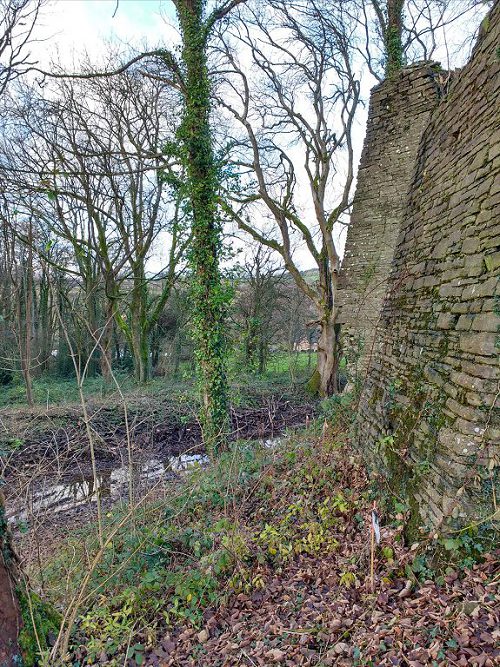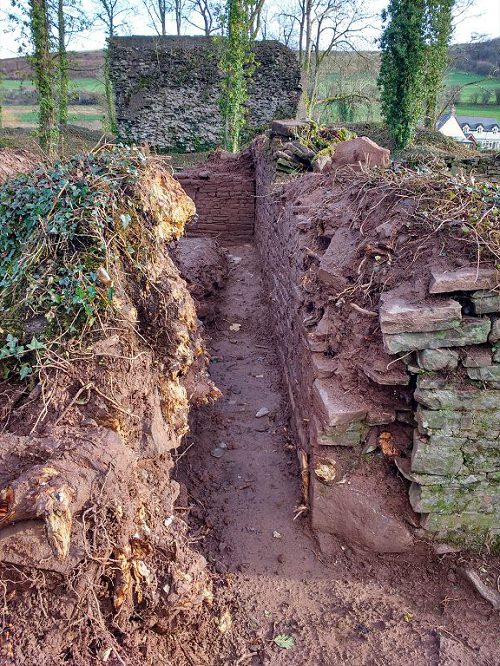Blaenllyni Castle
Probably one of the best kept secrets in the area is this large castle, covering an area of approximatly 200 x 100mtrs situated at Cathedin. Extensive earthworks including a moat, and as can be seen several remains of masonary still exist, making for an interesting visit, beware the gound is very uneven, and the traps of previous investigatoy digs are quite numberous. Car parking near by is non existant and it is important not to inconvience local people. The history of the castle follows.
The Marcher Lordship of Blaenllynfi was created from part of the Lordship of Brecknock in 1208 when the Lord of Brecknock (William de Braose) fell out with King John in a spectacularly bad way. The first Marcher Lord of Blaenllynfi was Peter FitzHerbert. The Castle was probably constructed between 1208 and 1215. It fell into the hands of the Braose family but was returned to the FitzHerberts in 1217/1218 following King John’s death.
King John's successor, Henry III also had trouble with his barons, his chief opponent being Richard Marshal, 3rd Earl of Pembroke. In August 1233, Richard refused to attend the king, and was thus declared traitor. Subsequently, Richard formed an alliance with Prince Llywelynab Iorwerth and they jointly attacked Blaenllynfi castle in October 1233. Soon rebuilt, the castle was again attacked by Llywelyn ap Gruffydd when the Second Barons' War broke out, in 1262. In 1305 John FitzReginald granted a manor within the Lordship to Rhys ap Hywel, an ally of King Edward I and the heir of the last king of Brycheiniog (the realm which became the Lordship of Brecknock).
In 1322 the king seized the Lordship of Blaenllynfi and gave it to the Despensers. The castle had probably never been adequately repaired after the siege by Llywelyn ap Gruffydd, and at the time of Hugh's death, in 1326, it was nearly ruinous.
An inquisition by jury found many defects in the castle on 23 January 1337, although archaeological evidence shows that the defences were improved around this time.
In the autumn of 2020 Cadw informed the History group that they intended to make funding available for a five year plan to improve access, and interpretation of the site so that more of the Castle features are clearly identifiied and understood. Specalist contractors can be seen making an initial start.

